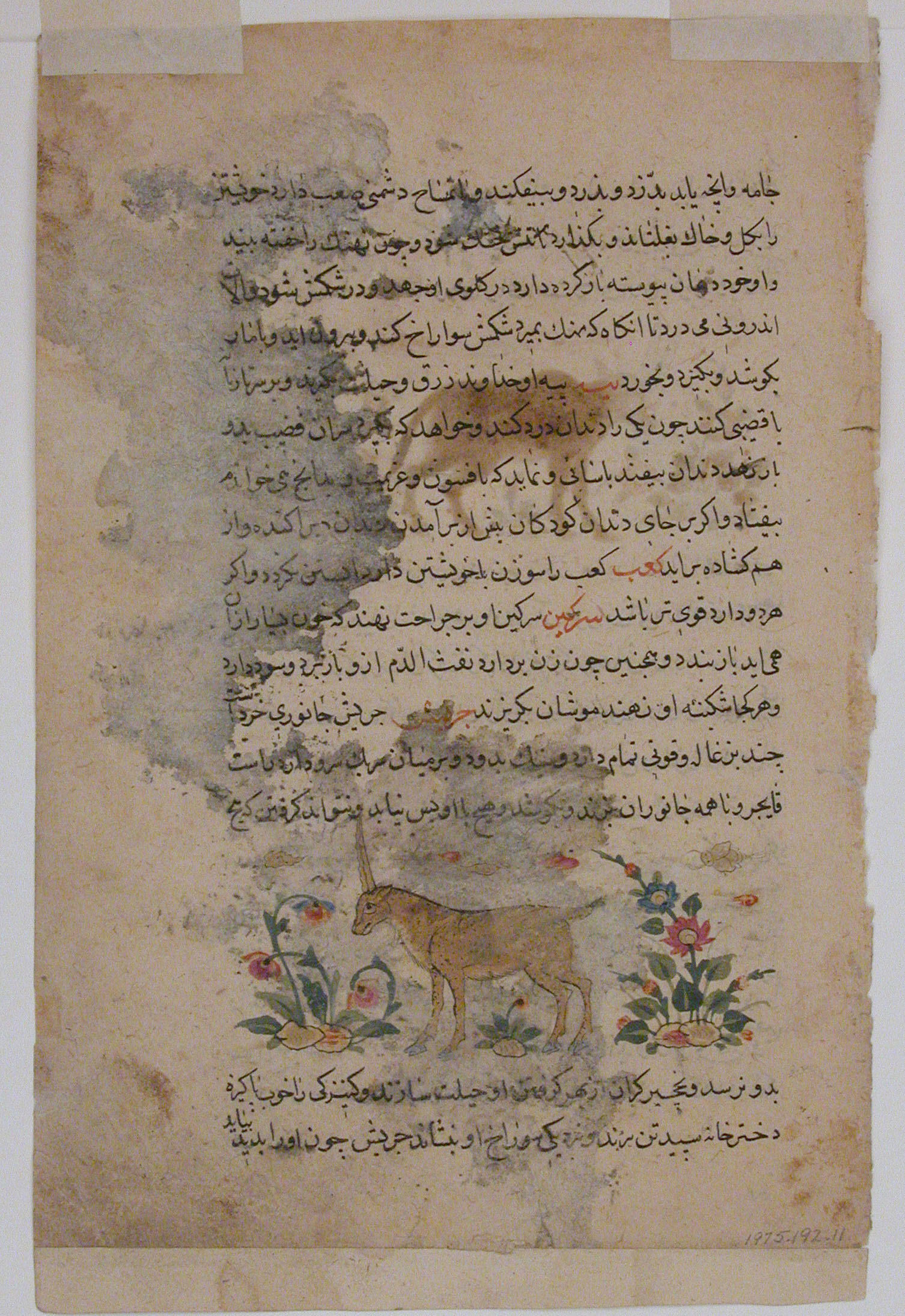"Steinbok", Folio from a Dispersed Nuzhatnama-i ‘A’a’i of Shahmardan ibn Abi’l Khayr
Author Shamardan ibn Abi 'l Khayr Iranian
Not on view
The encyclopaedic text from which this page comes was written between 1095 and 1119 and consists of two parts, one devoted to the three kingdoms of nature, including humans, animals, agriculture, and minerals and the other to various sciences and pseudosciences. Nineteen folios with thirty-three images are extant and widely dispersed in museums in Europe and North America. The illustrations of animals are characterized by the absence of marginal rulings and a horizon line. Here a steinbok with high curved horns is depicted in profile in conformity with the images of other animals and birds in this manuscript. The painting of rocks, leaves and flowers with wash instead of the customary saturated pigments of early sixteenth-century Persian painting recall the similar treatment in the work of some Isfahan painters around 1600. The steinbok’s form is defined by a firm black outline instead of the calligraphic line defining contours characteristic of Isfahan works. This plus the dearth of closely comparable images from other schools make the assignment of the manuscript to a specific place of production untenable.
Due to rights restrictions, this image cannot be enlarged, viewed at full screen, or downloaded.
This artwork is meant to be viewed from right to left. Scroll left to view more.



